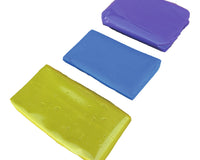Autumn is one of the most overlooked seasons when it comes to car care, yet it’s a time when vehicles face some of the toughest environmental challenges of the year. Falling leaves, sudden temperature drops, increased moisture, morning dew, early frost, tree sap, and long-lasting road grime all start appearing at once. For beginners who may feel overwhelmed by the idea of detailing, autumn is actually the perfect time to learn because every small effort you put in during these months pays off dramatically during winter. Proper seasonal detailing now helps prevent rust, protects the paint, maintains visibility, and ensures the interior stays clean and dry when the weather turns harsh.
Many drivers notice their car starts to look dull or dirty more quickly during autumn, but they don’t always realise why. Leaves that land on your vehicle carry tannins, moisture, and natural acids that stain paintwork and block drainage channels if left untouched. Moisture in the air can cling to every surface, encouraging mould on interior carpets and cloudiness on windows. Mud and road contaminants stick more aggressively in colder temperatures, meaning wash cycles need more attention and protection must be stronger. For beginners, this is simply about understanding seasonal changes and preparing your car to stay protected in advance.
Approaching detailing in autumn with a beginner-friendly mindset allows even first-timers to achieve professional-looking results without complicated techniques. You are not expected to polish paintwork with machines or restore trim like a professional. Instead, autumn detailing for beginners is about simple steps done consistently, using basic products, and focusing on the preventative habits that keep your car safe and clean. With the right routine, your vehicle will stay protected throughout autumn and transition smoothly into winter.
Understanding What Makes Autumn Tough on Your Car
The autumn season introduces a unique mix of environmental threats that directly impact vehicle surfaces and mechanical components. Leaves may seem harmless at first, but once they become wet, they trap moisture underneath and create staining on paint, glass, and trims. They also clog around wipers, air intakes, and boot hinges, increasing the chances of corrosion and mechanical strain. When beginners learn to remove debris quickly, they prevent unnecessary long-term damage and keep their detailing workload much easier to manage.
Cold mornings and warm afternoons also create a cycle of condensation that settles on windows, door seals, and interior carpets. This moisture can cause fogging, mould growth, and unpleasant odours inside the cabin. When your vehicle breathes in cool air and warm air throughout the day, the interior materials naturally absorb moisture unless protected or ventilated. Simple routines, such as drying the rubber seals, cleaning the glass, and using interior protection, help beginners maintain their car with less effort.
Road grime also becomes more aggressive in autumn because roads collect more dirt, organic material, fine dust, and oils as the weather changes. Every time you drive through a damp road, that mixture sticks to the lower panels, wheels, and wheel arches. If beginners understand this early on, they will know how important it is to wash more frequently and protect vulnerable surfaces. A properly maintained car will not only look cleaner but will resist winter salt and heavy grime far better.
Beginner-Friendly Exterior Wash Routine for Autumn
A beginner’s autumn wash routine doesn’t require expensive tools or high-end products. The focus is on consistency and proper technique. Start by rinsing the vehicle thoroughly to remove loose leaves, dirt, and moisture-trapped debris. Since autumn grime is stickier, a stronger pre-wash solution or snow foam helps lift contaminants before contact washing. Beginners should always focus on reducing the chances of paint damage by allowing chemicals to loosen dirt rather than scrubbing aggressively. This helps avoid swirl marks, especially when the paint is cold and more susceptible to micro-marring.
When washing, use a safe, pH-neutral shampoo and a microfibre wash mitt, working from the top down. Autumn is the season when the lower half of the vehicle gets dirtier faster, so leaving the dirtiest panels for last prevents transferring grime upward. Rinse frequently and ensure water does not pool around badges, trims, and rubber seals where leaves and dirt often collect. For beginners, this approach keeps the wash process simple and prevents accidental scratches caused by dragging debris around.
After washing, thoroughly dry the vehicle using a microfibre drying towel. Autumn air carries moisture, so allowing the car to air dry increases the chances of water spots, streaks, and trapped moisture. Paying special attention to door shuts, boot channels, and fuel flaps is crucial because these areas collect the most autumn debris. By following this routine, beginners can keep their car in far better condition without needing professional tools or advanced detailing skills.
Protecting Paintwork Before Winter Arrives
Autumn is the most important time of the year to apply paint protection because the cooler temperatures make waxes and sealants bond more effectively. Beginners don’t need ceramic coatings or machine polishing to achieve good results. A simple spray sealant, liquid wax, or hybrid protectant gives the paint a hydrophobic layer that repels water and prevents contaminants from sticking. This is essential for resisting tree sap, moisture, and road grime throughout the season.
The key idea is creating a barrier between the paint and the environment. When leaves, sap, or morning frost land on protected paint, they are far less likely to stain or cling. Beginners benefit dramatically from this because cleaning becomes easier and faster. A protected surface also resists fading and oxidation caused by UV rays, which remain surprisingly strong during early autumn. Applying a protective layer every 4 to 6 weeks is enough to maintain gloss and prevent long-term paint issues.
For those who want slightly more durability without complicated processes, synthetic sealants are ideal. They last longer than natural wax and require very little skill to apply. Simply wiping on and buffing off is enough to provide months of defence, making them perfect for beginners preparing their vehicles for winter. Prioritising protection now ensures your car stays glossy, easier to wash, and better shielded from harsh cold weather ahead.
Wheel and Tyre Care During Autumn
Wheels suffer intensely during autumn because they collect brake dust, road grime, and moisture from wet surfaces. For beginners, keeping wheels protected is not about perfection but about preventing long-term damage. Brake dust becomes more corrosive when mixed with damp autumn air, and if ignored, it embeds into wheel surfaces and becomes difficult to remove. Using a basic wheel cleaner every two weeks keeps wheels looking fresh and prevents corrosive buildup.
Tyres are equally important and should not be neglected. Applying a good tyre dressing helps repel water, prevent cracking, and keep rubber from drying out as temperatures drop. Beginners should choose a water-based dressing that doesn’t sling and gives a natural finish. This type of dressing is safer, cleaner, and more protective during autumn months. When tyres stay conditioned, they perform better, endure winter salt more easily, and remain flexible in cold weather.
Cleaning wheel arches also makes a noticeable difference during autumn. These areas collect the most moisture, leaves, and mud. A simple rinse or scrub keeps corrosion at bay and prevents long-term dirt accumulation. For beginners, maintaining wheel arches is an easy step that significantly improves the car’s overall cleanliness and helps protect the undercarriage during winter.
Interior Care for Autumn Moisture and Debris
Autumn interiors require more frequent attention because passengers drag in more moisture, leaves, and mud from wet conditions. Carpets and mats absorb this moisture quickly, creating an environment perfect for mould and unpleasant smells. Beginners should regularly vacuum the interior, especially around the footwells and under the pedals. Using rubber mats instead of fabric mats during autumn is a small but highly effective change that prevents moisture from seeping deep into the carpet fibres.

Interior glass also fogs more easily in autumn due to fluctuating temperatures. Cleaning the inside of the windscreen and windows with a proper glass cleaner prevents fogging, streaks, and night-time glare. Beginners often overlook this, but clean glass dramatically improves visibility and safety. Paying attention to the rear window is just as important, especially in vehicles with heating elements that trap moisture and dirt.
Wiping door seals with a silicone-based protectant ensures they stay flexible and prevent water from entering the cabin. As temperatures drop, seals become drier and more brittle, leading to small leaks that cause dampness inside. Beginners can easily maintain seals with quick wipes during their routine, keeping the interior dry and comfortable throughout the season.
Protecting the Exterior Trim and Plastics
Autumn accelerates fading on exterior plastics due to increased moisture and UV exposure. Plastic trims absorb contaminants and lose their colour quickly when not protected. Beginners don’t need specialised tools for this; a simple trim restorer applied regularly rejuvenates colour and prevents fading. Once protected, trims repel water more effectively and maintain a darker, more uniform appearance.
Grilles and vents require extra attention because they collect leaves and debris. Removing trapped material prevents airflow obstruction and helps avoid mould, staining, and long-term damage. A quick brush or gentle blast of air is enough to keep these areas clear. For beginners, this simple habit prevents build-ups that are much harder to clean later.
Applying a water-repellent coating to trims ensures that rain and moisture roll off easily. This makes maintenance much simpler and helps the vehicle stay cleaner between washes. With consistent care, beginners can maintain a fresh, well-protected exterior throughout autumn.
Glass and Visibility Care for Autumn Weather
Clear visibility is crucial during autumn because rain, fog, and early darkness reduce driving safety. Beginners can dramatically improve visibility by applying a glass sealant or rain-repellent solution. These products cause water to bead off the windscreen, reducing the need for wipers during light rain and improving clarity during storms. It’s one of the easiest detailing upgrades with the most noticeable effect.
Cleaning wiper blades with a simple rubber cleaner extends their lifespan and prevents smearing. Autumn debris such as pollen, dust, and leaves quickly contaminate blades, diminishing their performance. Beginners who clean their wipers regularly enjoy clearer glass and avoid premature blade replacement.
Checking windscreen washer fluid is another essential step. Using a winter-grade washer solution that prevents freezing ensures you can clean the glass properly even on frosty mornings. This small habit improves visibility significantly and makes autumn driving safer.
Engine Bay Debris Removal for Autumn
Leaves often accumulate inside the engine bay, especially around the battery, strut mounts, and air intake areas. Beginners should not attempt deep engine cleaning during cold weather, but removing loose leaves and debris is essential. If left unchecked, leaves trap moisture and encourage corrosion, pests, and unpleasant smells. A simple brush or gentle vacuuming is enough to maintain cleanliness.
Checking fluid levels before winter is also beneficial. Autumn road conditions place added strain on the engine, and consistent maintenance helps prevent cold-weather issues later. Beginners don’t need to perform mechanical repairs—just keeping the area tidy, dry, and free of buildup is enough to improve long-term longevity.
Ensuring drainage channels under the bonnet remain clear prevents water pooling. When water gets trapped in these channels, it freezes once temperatures drop. Beginners who keep these areas clear help maintain the vehicle’s structural integrity and prevent corrosion.
Simple Protection Steps to Prepare for Winter
Autumn is the transition period into winter, and taking small but effective steps now ensures your car withstands the harsh upcoming months. Applying a fresh protective layer on paint, glass, wheels, and trim creates a defensive shield against cold weather, salt, and road grime. For beginners, this is the foundation of seasonal detailing and requires no specialist equipment.
Regular washing should continue even as temperatures drop. Dirt becomes more corrosive during colder months, and maintaining a clean vehicle extends the life of both paintwork and mechanical components. Beginners who wash their car every two to three weeks enjoy a far cleaner, more manageable vehicle during winter.
Finishing with a simple interior refresh keeps the cabin warm, dry, and pleasant. Using moisture absorbers, cleaning fabrics, and removing debris ensures that autumn dampness doesn’t linger into winter. This holistic approach to seasonal detailing allows beginners to maintain their car with confidence and ease.
Conclusion: Autumn Detailing Made Easy for Beginners
Autumn car care does not have to be complicated, and this guide proves that even complete beginners can achieve excellent results with simple, consistent routines. By understanding how the season affects your car and following straightforward detailing habits, you protect your paint, maintain visibility, ensure interior comfort, and prepare your vehicle for the harsh demands of winter. Prioritising autumn detailing now saves time, effort, and money later, while keeping your car looking clean, fresh, and well-maintained throughout the colder months ahead.




